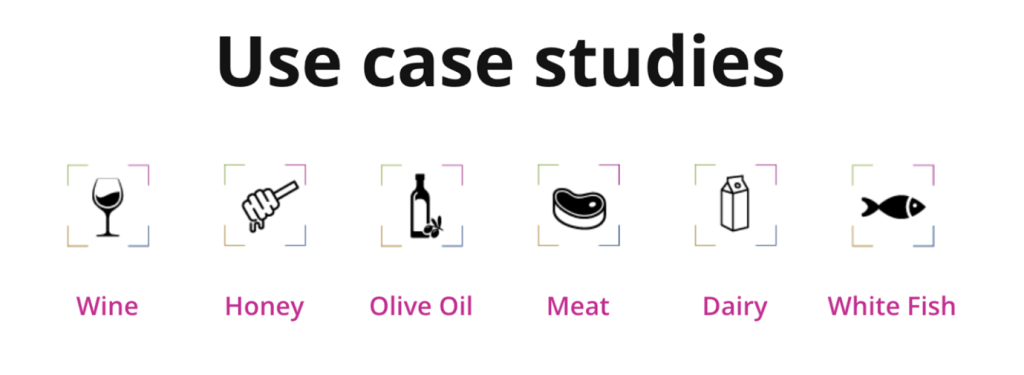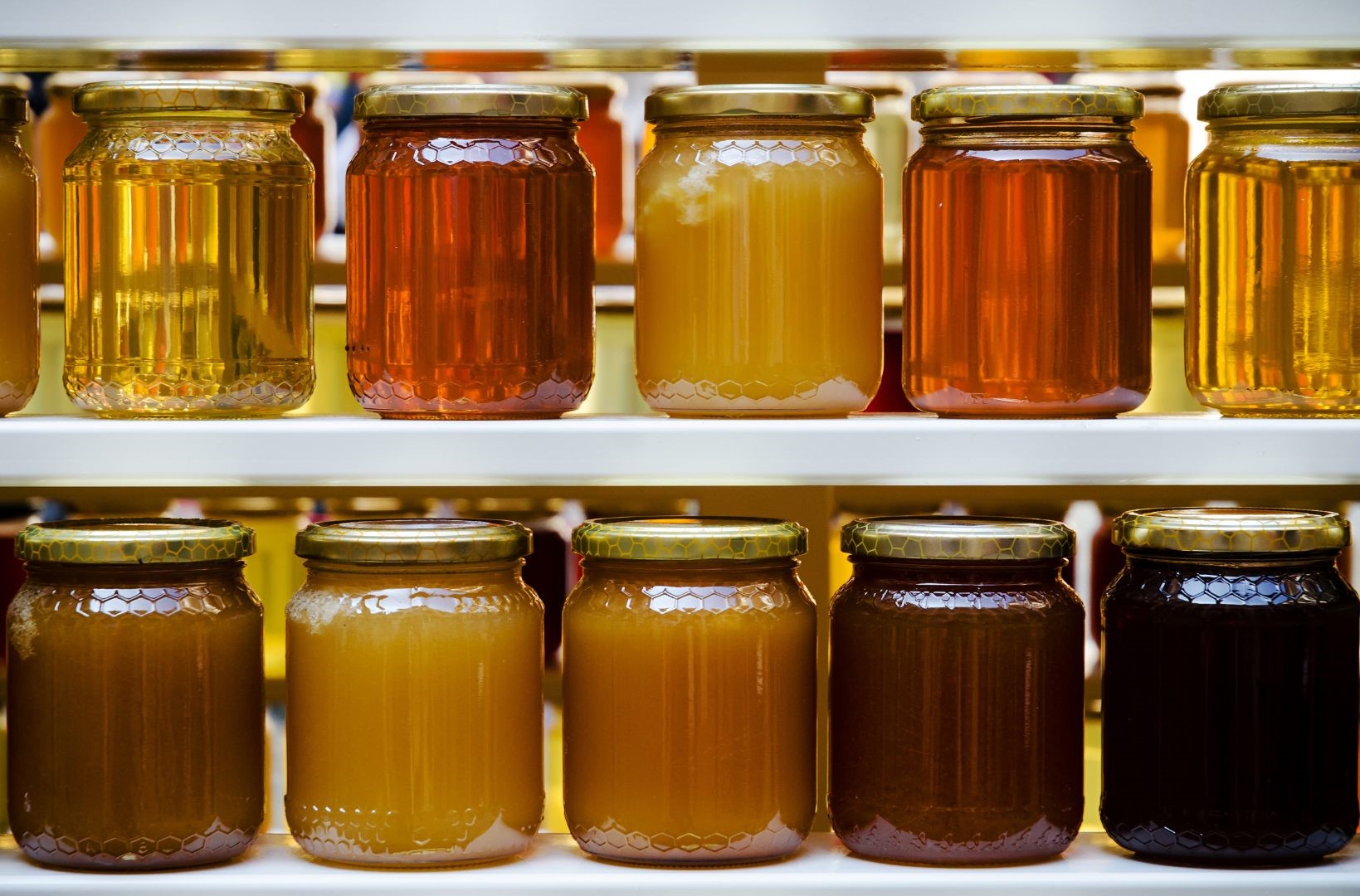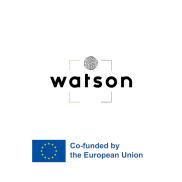Safeguarding Food Integrity: Combatting Fraud Across EU Supply Chains
The Need for Transparency: An Overview of Food Fraud Challenges
Securing Our Plates: Unveiling the Role of Watson in Safeguarding Food Integrity and Combatting Fraud Across EU Supply Chains
Consumer health has been in serious jeopardy due to food fraud.
What is food fraud?
Food fraud is the term used to describe a broad range of illegal activities, including overtreatment, replacement, dilution, alteration, and fraudulent representation of food products, ingredients, and geographical origin (Ahmed Osman, 2023).
Food fraud has continued to be a serious issue in recent years, as some food merchants trick unsuspecting customers by adding additives or diluting the purported contents with less expensive materials (Soon-Sinclair et al., 2024). Food fraud is the deliberate falsification of food to profit financially, which can endanger the health and safety of consumers. Significant unintentional negative health impacts may arise from the use of unauthorized techniques or the inclusion of counterfeit ingredients that threaten the legitimacy of their product (Rocha et al., 2016).
For example, natural honey is more expensive than artificial sweeteners because of its distinct flavor and nutritional benefits. Consequently, deliberate adulteration with inexpensive inverted sugar syrups, such as those derived from beets, sugarcane, or maize, increases honey product sales. Those with food allergies may potentially be harmed by food contaminated with allergens (Jurica et al., 2021). Therefore, it is necessary to perform a thorough analysis by combining systematic reviews and patent analyses. In mitigating food fraud, machine learning and artificial intelligence algorithms can improve conventional detection techniques.
Strategies to combat food fraud: A multifaceted approach
While there is currently a well-established international collaboration for food safety control—such as the WHO International Food Safety Authorities Network (INFOSAN)—this is not yet true for food authenticity.
Most food fraud cases involve cross-border transactions, necessitating the cooperation of respective legal and law enforcement agencies and administrative support through formalized channels between EU Member States and Third Countries.
- The European Commission’s Directorate-General Health and Food Safety (DG SANTE) established a dedicated EU Food Fraud Network, installed the Administrative Assistance and Cooperation System (AAC), arranged Coordinated Control Plans, and provided specialized training as part of the Better Training for Safer Food program in response to the European Parliament’s request (Ulberth, 2020).
- An additional step was establishing the Knowledge Centre for Food Fraud and Quality (KCFFQ), run by the Joint Research Centre (JRC) of the European Commission. Its goal is to generate, gather, and organize food fraud data, interpret it, and turn it into verified knowledge that will guide the creation of policies. These outputs will guarantee and defend the legitimacy and caliber of food supplied within the European Union. In addition, establishing an expert network among the technical and scientific branches of the Member State’s competent authorities dealing with food fraud is one of the primary responsibilities of the KCFFQ.
Understanding Watson: A Game-Changer in Agri-Food Chain Integrity
To speed up the implementation of transparency solutions in the EU food systems, the Watson project offers a methodological framework and a collection of tools and systems to identify and mitigate fraudulent actions throughout the whole food supply chain.
Leveraging systemic innovations that:
- increase transparency in food supply chains through improved track-and-trace mechanisms containing accurate, timely, and untampered information for the food product throughout its whole journey,
- provide authorities and policymakers with data, knowledge, and insights to have a complete situational awareness of the food chain and
- increase consumer knowledge of food safety and value, encouraging the adoption of healthier lifestyles and the growth of sustainable food ecosystems.
Using an intelligence-based approach to risk calculation, Watson tackles food fraud from all angles.
Three main pillars support the Watson project are:
- identifying data gaps in the food chain;
- providing techniques, procedures, and instruments to identify and combat food fraud; and
- facilitating efficient cross-border cooperation of public authorities through reliable and accurate information sharing.
Various emerging technologies such as artificial intelligence (AI), internet of things(IoT), and distributed ledger technology (DLT) will be developed and integrated into the Watson framework to provide transparency in supply chains by creating a strict traceability regime and innovative instruments for quick, non-invasive, on-the-spot food product examination.

The Watson framework will be tested in six different agri-food chains considering different operational procedures and diverse environments:
a) Improving traceability of wine;
Numerous initiatives have been made to address the issue of wine counterfeiting. The most frequent difficulties are:
- gathering information securely from every stage of the wine supply chain, including the harvesting and processing of grapes and
- designing non-copyable product labels that act as a connection between the digital data and the actual products.
The latter usually means using pricey technology, such as holographic labels, which are only practical for the most expensive wines from an economic standpoint. In this pilot, Watson will focus on integrating wine color inspection devices and IoT sensing devices in the wine value chain as data sources for the blockchain platform.
b) Protecting PGI honey’s authenticity;
In recent years, a great deal of research has been done regarding the use of Near Infrared Spectroscopy (NIR) for the two purposes that this case study focuses on adulterating honey and mislabelling products with both botanical and geographic origins (though the latter is used less frequently). Many of them produced pertinent results about the effectiveness of mislabelling control and adulteration. However, they continue to rely on spectrometers that are primarily designed for bench usage in laboratories, are still very expensive, are typically operated by skilled technicians, and are big and heavy. Thus, there is still a great deal of space for development and achieving the desired results of the approaches that have been pursued using fast, low-cost, non-destructive, and easy-to-use portable NIR and HIS-based sensor methods. 
c) Verifying the authenticity and traceability of olive oil on-site;
DNA fingerprinting, an unquestionable and easily accessible source of information that assigns a genetic ID to any natural product, can be used to stop olive oil fraud, such as by identifying the kind of olives that make up extra virgin olive oil (EVOO) or the presence of vegetable oil substitutions. An EVOO’s genetic profile can be determined using DNA testing, which virtually eliminates admixing and guarantees the varietal makeup of the product from the field to the market. DNA identification and traceability can benefit society and the environment by elevating the value of indigenous varieties that embrace agrobiodiversity. This balances the needs of consumers with those of nature, food, and biodiversity, which aligns with the Green Deal EU Farm to Fork framework.

d) Identifying potential manipulations within the meat supply chain;
With the help of this particular case study, Watson will successfully handle a number of the issues surrounding food fraud in the meat chain. Watson will offer a framework for methodology and a collection of instruments and systems for identifying and stopping food fraud in meat and meat products. A comprehensive rundown of current techniques encompassing conceivable manipulations along the meat supply chain will be provided and verified for plausibility. 
e) Enhancing the traceability of high-value products in the cereal and dairy chains;
Watson will target the gaps in the dairy chain related to product origin, shelf-life, and ingredient usage. The implementation of an item-level track and trace solution will enable the following functions:
- Tracking and tracing products and their raw materials at the product level
- Acting as a call to action for consumers
- Verifying the item’s quality (authenticity, shelf-life)
- Putting in place a two-way communication channel for farm-to-fork
With item-level tracking solutions, it is possible to keep track of mass products throughout their lifecycles thanks to product condition monitoring, which allows participants in the item’s lifecycle to give and receive information about the item’s current state. Citizens can directly start a conversation process with the product maker with the help of consumer engagement.

f) Stopping the production of fake white fish;
Creating a blockchain-based network that lets fish buyers verify the legitimacy and calibre of the catch will be Watson’s focus. Three areas of technology will be covered:
- Real-time data collection from the Internet of Things (IoT) sensors and enterprise systems is directly transmitted to the blockchain platform.
- Secure data sharing via blockchain technology.
- Dependable and secure data access via non-copyable labels.
A blockchain network would facilitate the interchange of all information amongst the many supply chain participants while maintaining security and anonymity. Data will be gathered via IoT sensors at every stage of the supply chain to guarantee production, storage, and transit conditions. 
References
References
Ahmed Osman, O. (2023). Fraud on Halal Food: Principles, Quality Challenges, and Safety Concerns. In O. Ahmed Osman & A. Moneim Elhadi Sulieman (Eds.), Halal and Kosher Food: Integration of Quality and Safety for Global Market Trends (pp. 131–144). Springer International Publishing. https://doi.org/10.1007/978-3-031-41459-6_11
Jurica, K., Brčić Karačonji, I., Lasić, D., Bursać Kovačević, D., & Putnik, P. (2021). Unauthorized food manipulation as a criminal offense: Food authenticity, legal frameworks, analytical tools and cases. Foods, 10(11). Scopus. https://doi.org/10.3390/foods10112570
Rocha, T., Amaral, J. S., & Oliveira, M. B. P. P. (2016). Adulteration of Dietary Supplements by the Illegal Addition of Synthetic Drugs: A Review. Comprehensive Reviews in Food Science and Food Safety, 15(1), 43–62. Scopus. https://doi.org/10.1111/1541-4337.12173
Soon-Sinclair, J. M., Ha, T. M., Vanany, I., Limon, M. R., Sirichokchatchawan, W., Abdul Wahab, I. R., Hamdan, R. H., & Jamaludin, M. H. (2024). Consumers’ perceptions of food fraud in selected Southeast Asian countries: A cross sectional study. Food Security, 16(1), 65–77. https://doi.org/10.1007/s12571-023-01406-z
Ulberth, F. (2020). Tools to combat food fraud – A gap analysis. Food Chemistry, 330, 127044. https://doi.org/10.1016/j.foodchem.2020.127044
Contacts
Project coordination
Dr Dimitrios Argyropoulos ([email protected])
University College Dublin, School of Biosystems and Food Engineering, Dublin, Ireland
Project management
Sarah Nolan MSc ([email protected])
University College Dublin, School of Biosystems and Food Engineering, Dublin, Ireland
Project dissemination, exploitation, and communication
Angeliki Milioti MSc ([email protected])
Watson has received funding from the European Union’s Horizon Europe research and innovation program under grant agreement no. 101084265
References
Ahmed Osman, O. (2023). Fraud on Halal Food: Principles, Quality Challenges, and Safety Concerns. In O. Ahmed Osman & A. Moneim Elhadi Sulieman (Eds.), Halal and Kosher Food: Integration of Quality and Safety for Global Market Trends (pp. 131–144). Springer International Publishing. https://doi.org/10.1007/978-3-031-41459-6_11
Jurica, K., Brčić Karačonji, I., Lasić, D., Bursać Kovačević, D., & Putnik, P. (2021). Unauthorized food manipulation as a criminal offense: Food authenticity, legal frameworks, analytical tools and cases. Foods, 10(11). Scopus. https://doi.org/10.3390/foods10112570
Rocha, T., Amaral, J. S., & Oliveira, M. B. P. P. (2016). Adulteration of Dietary Supplements by the Illegal Addition of Synthetic Drugs: A Review. Comprehensive Reviews in Food Science and Food Safety, 15(1), 43–62. Scopus. https://doi.org/10.1111/1541-4337.12173
Soon-Sinclair, J. M., Ha, T. M., Vanany, I., Limon, M. R., Sirichokchatchawan, W., Abdul Wahab, I. R., Hamdan, R. H., & Jamaludin, M. H. (2024). Consumers’ perceptions of food fraud in selected Southeast Asian countries: A cross sectional study. Food Security, 16(1), 65–77. https://doi.org/10.1007/s12571-023-01406-z
Ulberth, F. (2020). Tools to combat food fraud – A gap analysis. Food Chemistry, 330, 127044. https://doi.org/10.1016/j.foodchem.2020.127044
Further reading:
Food Fraud in Honey and Maple Syrup
Food Fraud in Spices and Herbs
Blockchain in the agri-food supply chains – How is Blockchain being used in agriculture?
PDO/PGI Extra Virgin Olive Oil and DNA Traceability to ensure Purity










































































